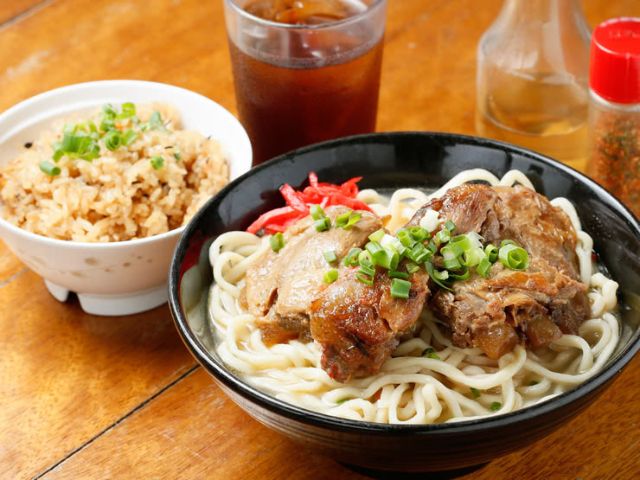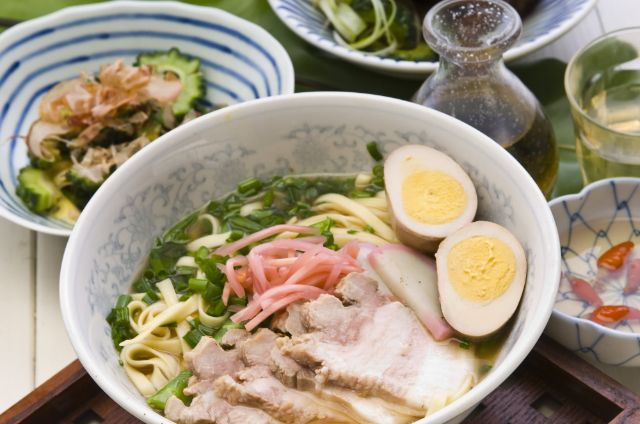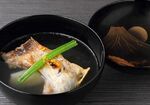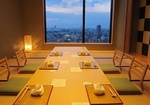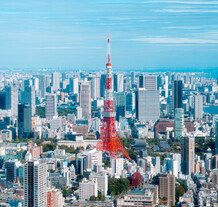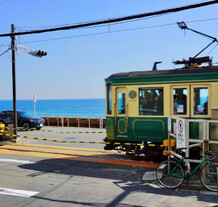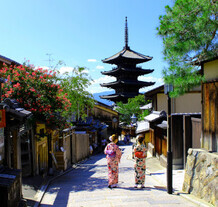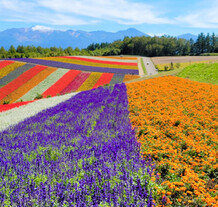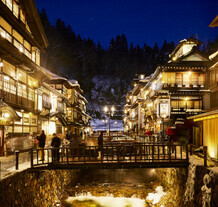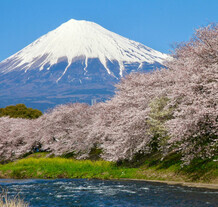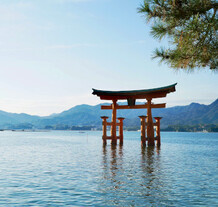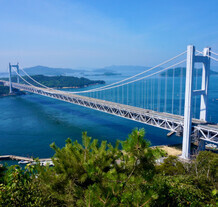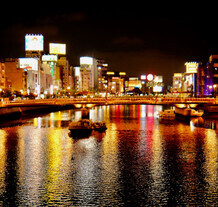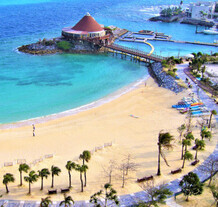Okinawa has a unique food culture, and is known for its many famous dishes, such as Okinawa soba (wheat noodles), rafute (stewed pork belly), and Agu pork. When visiting Okinawa, it goes without saying that you want to experience local flavors that you can't find anywhere else! Here is an introduction to both Okinawan cuisine and some recommended spots where you can try it.
What Exactly is "Okinawa's Famous Cuisine"?
![What Exactly is "Okinawa's Famous Cuisine"?]()
![Okinawa's Must-Try Cuisine and Where To Taste It]()
Okinawa developed its unique Okinawan cuisine, that differs from that of mainland Japan, influenced by China in the past and later by America after the Second World War, along with the geological reason, unique tropical environment, and the history as an independent kingdom. Dishes featuring pork are particularly prevalent, such as rafute, made from stewed pork belly, and soki, made using stewed spare ribs. Typically, the whole pig is used from head to trotters without wasting any part. Signature Okinawan food items like umibudo (sea grapes), shimarakkyo (leeks), and shimadofu (Okinawa tofu) are also abundant here. An Okinawan food known throughout Japan is chanpuru, a home-style dish featuring shimadofu and various vegetables mixed together and stir-fried. Other dishes include Okinawa soba and tofuyo (fermented tofu), and when it comes to sweets, there are many choices, such as sata andagi (deep-fried buns) and chinsuko (biscuits). Discover the breadth and depth of this cuisine by immersing yourself in Okinawa's rich culture while exploring these flavors!
Okinawa Soba
When you go to Okinawa, you'll want to try Okinawa soba. This famous dish has noodles that are made from wheat flour and features a flavorful soup made from pork ribs and katsuobushi (bonito flakes). While there are many varieties of Okinawa soba, the most popular is "soki soba". This dish is topped with sweet-and-spicy spare ribs (soki) for a hearty meal. Noodle types and soups vary by area, so discovering new favorite flavors while traveling around is always fun.
Jushi
Jushi (rice stew) is a popular feature of Okinawa soba sets. Ingredients include pork belly, carrots, hijiki (dark seaweed), and shiitake mushrooms, which are steamed with the rice using pork juices and a konbu (kelp) broth reduction. Depending on the way it is prepared, it is also called "boroborojushi", "kufajushi", and other names. This staple dish appears in a wide variety of contexts, from celebratory events to home cooking.
1. Uruku Soba Tomigusuku Branch (Onoyama-koen / Soba)
Try the excellent Okinawa soba and jushi here! The [Cartilage Soki Soba] is topped with soki whose meat and cartilage have been stewed until soft and tender. You can choose either a rich tonkotsu or light katsuo broth (Small 550 JPY (plus tax) / Large 650 JPY (plus tax)). The [Cartilage Soki Soba Special] (800 JPY (plus tax)) has larger amounts of noodles and meat compared to the standard option and also comes with jushi. A drink or small appetizer is also included, making this the perfect option for hearty eaters. There are many options besides soba as well, so whole families can all find something they like.
Uruku Soba Tomigusuku Branch
Open: 11:30 am - 2:00 pm
Closed: Irregular
Average price: [Dinner] 1,000 JPY
Access: 10 minutes by car from [Onoyama Park Station]
Address: 763-1, Tomigusuku, Tomigusuku, Okinawa
Goya
Goya (bitter melon) is the representative Okinawan vegetable. "Goya" is the Okinawan name, but it is referred to as "nigauri" in standard Japanese. Full of vitamin C, this highly nutritious vegetable is eaten to ward off fatigue in the summer. The unique bitterness is hard to get used to at first, but as you continue eating, you will inevitably become hooked, and eventually, the flavor will only serve to increase your appetite! Goya chanpuru is a popular dish that uses goya. This Okinawan home cooking recipe consists of goya stir-fried with firm shimadofu and spam.
2. King Eilly (Miebashi / Izakaya)
King Eilly offers everything from Okinawan cuisine to standard izakaya (Japanese pub) dishes. The menu has options like the [Okinawa Soba] (680 JPY (plus tax)) and [Rafute Chahan] (stewed pork belly fried rice) (780 JPY (plus tax)), but the most highly recommended item is the [Goya Chanpuru], featuring Okinawan goya (600 JPY (plus tax)). The uniquely bitter goya is skillfully cooked until to the point where even people who normally can't eat goya make an exception. Pair it with the local Orion beer or awamori, for a thoroughly enjoyable meal. It also should be said that the location just off Kokusai Street makes easy access.
King Eilly
Open: [Monday-Thursday] 5:30 pm - 1:00 am (L.O. Food 11:45 pm, Drinks 12:30 am) [Friday-Sunday, National Holidays, Day before National Holidays] 6:00 pm - 3:00 am
Closed: None
Average price: [Dinner] 2,000 JPY
Access: Turn onto Ichigin Street around the middle of Kokusai Street, and it's on the right-hand side (near Matsuo Intersection)
Address: 1-1-4, Makishi, Naha-shi, Okinawa
Gurukun
Gurukun (fusilier fish), or "takasago" in standard Japanese, is an indispensable food item in Okinawan home cooking. A notable feature of this fish is that while in the ocean, it has a bluish-green color reminiscent of the waters around Okinawa, but it takes on a beautiful reddish hue once brought on land. It is so prevalent in Okinawa that it was even chosen as the prefectural fish! While tasty as sashimi or stewed, the most common way of preparing gurukun there is deep-frying. The white fish is light and has a mild scent, making it perfect for frying. Gurukun spoils quickly, so it is rarely prepared as sashimi, although the fish's unique aroma makes it extremely tasty when eaten this way. Freshly-caught gurukun is everywhere in Okinawa, so be sure to give it a try.
3. Kaisen Ryori Hama no ie (Onna Village / Japanese Cuisine)
Enjoy carefully selected, seasonal fish prepared in all manner of ways at this restaurant. The [Fried Fish Set] (1,575 JPY at the time of publication) features an entire gurukun fried to perfection. The [Buttered Grilled Fish] is another popular option. A whole fish is seared on a teppan (Japanese iron grill) and coated in butter for a filling meal. The rich aroma of the butter will certainly stoke your appetite. Another recommended option is the [Abasa Soup Set] (1,785 JPY), which uses abasa (porcupine fish). The chef personally selects the fish at various markets, so diners can relax knowing that each fish has been individually inspected for freshness. This is the place to enjoy soft, tender fish to your heart's content!
Kaisen Ryori Hama no ie
Open:
11:00 - 23:00 (last order 21:30)Closed:
NoneAverage price:
[Dinner] 2,000 JPYAccess:
40 minutes by car from Naha Airport; About three minutes by car from the Okinawa Expressway Ishikawa Interchange. Address:
2097 Nakadomari, Onna, Kunigami-gun, Okinawa (
Map)
More Details Reservation Umibudo
Umibudo (sea grapes) is a kind of seaweed that grows in warm waters. Okinawa is the number one producer of umibudo in all of Japan. Umibudo's unique row upon row of small green beads has led to it also being referred to as "green caviar". The bubbles burst in your mouth and are known for their mild salty flavor. Add tare (sauce) or a mixture of vinegar, soy sauce, and mirin (sweet rice wine) for a simple way to enjoy this seaweed. Umibudo can usually be sampled at restaurants in the prefecture, but if you want to get it for cheaper, a local supermarket or roadside shop is your best bet. Their ideal temperature is around 15 - 28°C, so don't refrigerate after buying!
4. Waryu Shuki Wadachi (Makishi / Izakaya)
An Okinawan atmosphere permeates this elegant restaurant where you can enjoy house takes on Okinawan cuisine, along with over 60 varieties of awamori. While based on Okinawan cuisine, the food here is prepared with an original twist. Try dishes that you won't find anywhere else, such as the [Egg Goya Chanpuru] (780 JPY (plus tax)) featuring fried goya placed on a fluffy bed of eggs, or the [Salt Wasabi Rafute] (620 JPY (plus tax)), which is stewed for 6 hours using only awamori and shimamasu (Okinawan salt). The simple [Umibudo] (580 JPY (plus tax)) are only removed from the tank once ordered to ensure maximum freshness. They will burst in your mouth with juiciness!
Waryu Shuki Wadachi
Open: [Weekdays, Saturday] 5:30 pm - 12:00 am (Food L.O. 11:00 pm)
Closed: Sunday
Average price: [Dinner] 5,000 JPY
Access: 3 minutes walk from Makishi Station on Yui Rail
Address: 2F, Makishi Bldg., 3-11-19, Makishi, Naha city, Okinawa
Rafute
Rafute is pork belly stewed Okinawan-style with a soy sauce base and tare. This traditional dish was greatly valued in the times of the Ryukyu Kingdom as a way of preserving food. What separates rafute from normal stewed pork is the inclusion of awamori. Awamori has a much higher alcohol content compared to sake (a type of Japanese alcohol) and makes the meat very tender. Rafute is stewed with brown sugar and soy sauce for a sweet-and-spicy flavor, and the skin has a sublime, melt-in-your-mouth softness. The flavor is rich and deep, and the thorough stewing process reduces any excess pork fat, resulting in a surprisingly healthy creation. Rafute is offered when entertaining guests and is a must for special occasions.
5. Gettoan (Miebashi / Japanese Cuisine)
At Gettoan, you can relax in a quiet Japanese-style private room while experiencing the Ryukyu kaiseki (traditional Japanese course cuisine with tea) that was eaten in the times of the Ryukyu Kingdom. The chef specializes in Ryukyu cuisine, so you are sure to enjoy the various dishes offered here. The Okinawan-style [Rafute] is especially notable. While normally prepared with a soy sauce base, this rafute contains white miso (fermented soybean paste) for a milder flavor, and it is stewed for 4 hours until it simply melts in your mouth. The [5 Senzai Sampler] offers a variety of seasonal flavors, perfect for diners looking to sample various Ryukyu dishes. The menu also features a fresh blend of Ryukyu, French, and Italian cuisines, so you are sure to find something new when you come here.
Gettoan
Open: [Weekdays, Saturday] Dinner 6:00 pm - 11:00 pm (L.O. 10:00 pm)
Closed: Sunday
Average price: [Dinner] 5,000 JPY
Access: 10 minutes walk from Miebashi station on Yui Rail line. Cross the overpass and go northwest, cross Route 58. Turn left at MaxValu Matsuyama branch.
Address: 2-21-17, Matsuyama, Naha-shi, Okinawa
Agu Pork
Agu pork is native to Okinawa. The Agu pig's small size and low numbers make it highly valuable, and its characteristically well-marbled meat melts in your mouth. The fat is sweet and contains three times the amount of glutamic acid, the source of umami (Japanese savory taste), of regular pork. Furthermore, the fat consists almost exclusively of collagen, so it is quite healthy. This meat also contains amino acids, good for recovering from fatigue. There are many ways to enjoy this meat, such as shabu-shabu (sliced meat parboiled with vegetables), perfect for savoring the flavors of the meat itself, or the traditional dish [Minudaru], which features tonkatsu (fried pork cutlet) covered in sesame sauce and then steamed.
6. Ryukyu Tonya Kuroton (Makishi / Izakaya)
This restaurant is ideal for fully experiencing the cuisine of Okinawa. The centerpiece of the meal is the melt-in-your-mouth [Agu Pork Shabu-Shabu], which has a sweet fattiness that is utterly irresistible. Another option is the [Umibudo Shabu-Shabu], which has a broth made from types of awamori that are largely overlooked by other establishments. The appetizers provide glimpses into the flavors of local home cooking, as do the wide variety of other dishes available, such as yushidofu (tofu soup) and Okinawa soba. A new tonkatsu dish, made only with Yanbaru Agu pork, also comes recommended. Finally, there is a large selection of awamori here that has been collected from various famous production areas across Okinawa.
Ryukyu Tonya Kuroton
Open: 5:00 pm - 0:00 am (L.O. 11:00 pm)
Closed: Irregular
Average price: [Dinner] 3,000 JPY
Access: 30 seconds walk, directly connected to Makishi Station on Monorail
Address: 2F, 2-1-1, Asato, Naha city, Okinawa
7. Agu Tonkatsu Coshon Ukishima-dori Branch (Makishi / Izakaya)
Try the [Golden Agu Pork], rare even for Agu pork, at this specialty restaurant. Golden Agu pigs are raised on a mixture of sake lees and brown beech mushrooms, which produces their flavorful fat and juicy meat. You are sure to enjoy their specially fried tonkatsu. The [Golden Agu Pork Loin Katsu] (150g for 1,780 JPY) is a hearty portion, while the [Golden Agu Pork Tenderloin Katsu] (150g for 1,780 JPY) is a lighter option. Another recommended dish is the [Vegetable Katsu and Tenderloin Katsu] (850 JPY). The menu is available in 4 languages, making ordering easy for tourists.
Agu Tonkatsu Coshon Ukishima-dori branch
Open:
11:00 am - 11:00 pm (L.O. 10:00 pm)Closed:
NoneAverage price:
[Dinner] 1,500 JPY / [Lunch] 1,000 JPYAccess:
From Makishi Station, go west along Kokusai-dori Street. From [Mutsumi-bashi Bridge], go south along [Shijo Hon-dori Shopping Street]. Turn left at Ukishima-dori Street, then go straight for 10 meters.Address:
3-3-21 Makishi, Naha city, Okinawa (
Map)
More Details Reservation
Planning a trip to Okinawa? There is a wealth of local cuisine that you won't find anywhere else there, so be sure to eat to your heart's content and not miss anything when you visit!
Disclaimer: All information is accurate at time of publication.
